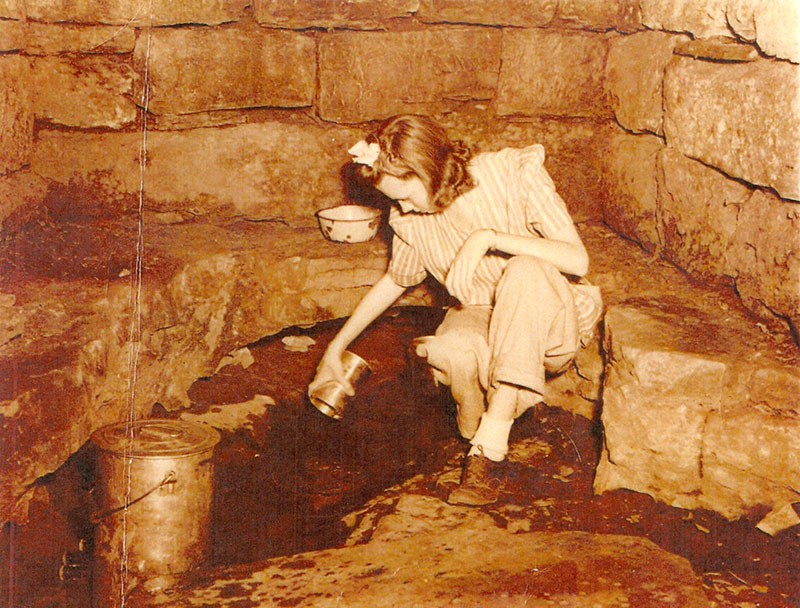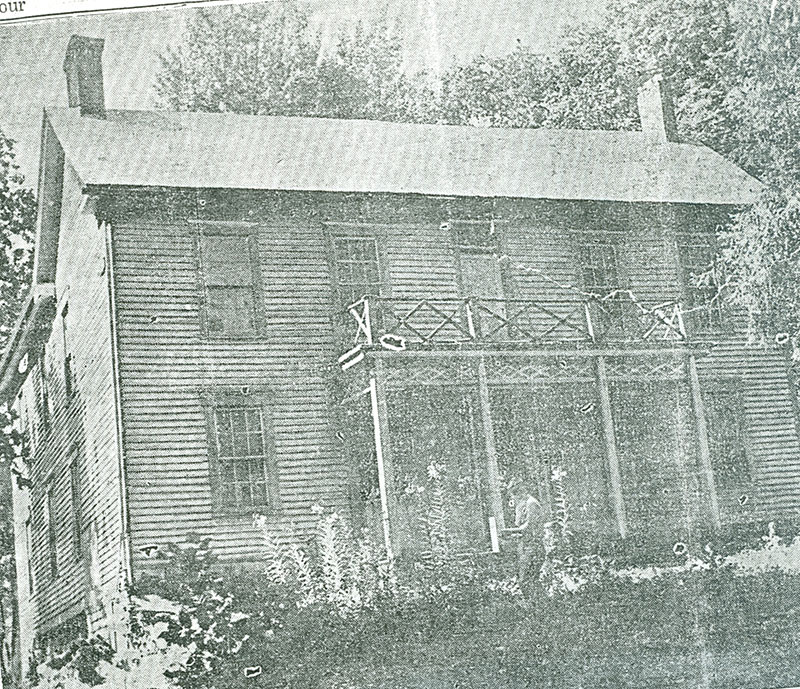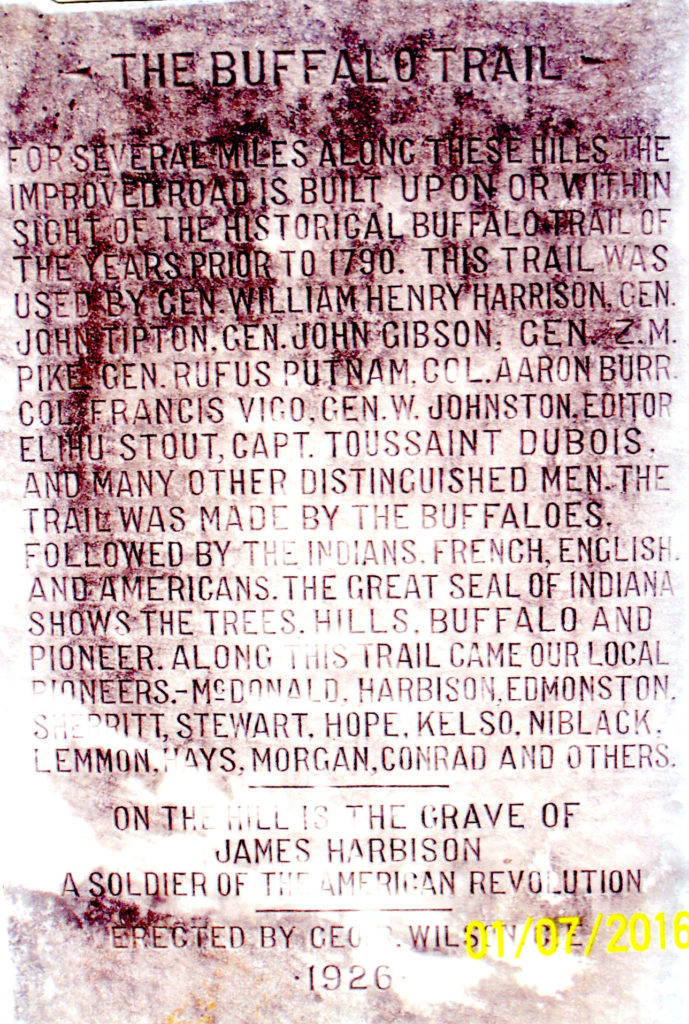Settlements
Settlers from Virginia, Maryland, and farther east took passage by boat down the Ohio River to the “Falls.” From that point they followed the buffalo’s trail since buffalo had chosen the easiest grades and generally the most direct courses, making the roads the favorite paths through the region. The paths were made hard by the herds that travelled over them.
It was apparently a common sight along the Trace to see a line of “Movers” wagons. They stopped along the trail at night to camp and would form the wagons in a square as protection from Native Americans while the women and children cooked inside the square. Dogs served as sentinels at night. The women and children slept inside the wagons while the men slept under the wagons. Normally the first person up would blow a horn to awaken the camp and begin the activities of the day. After breakfast the wagons would start on the next day’s journey.
Pioneer Mothers Memorial Forest- the old growth forest which now stands between SR 37 and US 150 is locally known as Cox Woods. The land was settled by the Cox family and the original virgin timber was protected by the family from the time they came to the area. Joseph and Mary Cox joined a group of Quakers headed through eastern Tennessee to the Indiana Territories in 1810 or 1811. They had heard of the new land where great forests grew, clear streams ran, where there was abundant game, and good soil for crops. They settled on 253 acres and after Indiana became a state he homesteaded a farm south of Paoli and raised 11 children.
An excerpt from the Illustrated Historical Atlas of the State of Indiana – 1876 notes:
“Joseph and Mary (Lines) Cox came from Tennessee to Indiana Territory in 1810, soon after they were married. In 1811 they were living in what is now Orange County…. The Coxes came into Southern Indiana over the old buffalo trail and somewhere between New Albany and the Orange county settlement, they fell in with William Henry Harrison and his soldiers. Mrs. Cox did some cooking for them and Harrison gave her a gold coin in appreciation of her kindness, and this she always treasured. In later years, their children loved to look at the gold piece and hear their mother tell the story. Many years later the oldest daughter of Joseph and Mary moved to Illinois and took with her the family Bible with its records, and a large chest containing various interesting things, among them the gold coin, which has always kept in the chest. All was lost in a disastrous fire.”
The Cox home is the second home built by the Cox family on the property and was completed by Elizabeth Cox, then a widow, in 1871.
Unlike most settlers, the trees on his land were never an annoyance to be cleared for Joseph Cox, nor to his sons or grandsons. Joseph was a fine wood craftsman and he did clear some land, but he kept the hillside forest of fine hardwoods intact and though he later operated a sawmill to cut his neighbor’s trees, he never cut his own. Today, this tract of land, managed by the Hoosier National Forest, looks very much as it did when pioneers first came across the buffalo trace.

The war of 1812 brought renewed threat from Native Americans and there was a lull in the travel of settlers. After the war, however activity was renewed on the trace and there began an influx of immigrants. These were settlers rather than adventurers and woodsmen of previous years. Forts, such as White Oak Spring had been built at various stations along the trace and they developed into towns. Communities were established by groups that traveled together, sometimes from Europe, and founded permanent towns.
“The first road leading from Vincennes to the east in the direction of Louisville, Kentucky, was by way of Petersburg, over what was called the Buffalo Trail so called as stated by old residents who had travelled over it from the fact that it had been originally traced through the intervening forest by the immense herds of buffaloes that passed over it in their annual migration back and forth from the bluegrass regions of Kentucky. They crossed the Kentucky River at the “Great Crossing” in Scott County (Ky), the Ohio River at the Falls at Louisville, and the Wabash at the ford just below this place (Vincennes), and thence to the rich prairies of usual route of travel from Vincennes to the east for many years after 1804.” (Cauthorn’s History of Vincennes – 1901)
In 1927, the Buffalo Trace was marked by a limestone marker between French Lick and Hayesville. The marker reads “The trail was used by General William Henry Harrison, Gen. John Tipton, Gen. John Gibson, Gen. Z.M. Pike, Gen. Rufus Putnam, Col. Aaron Burr, Col. Francis Vigo, Gen. W. Johnston, Editor Elihu Stout, Captain Toussant Dubois, and many other distinguished men. The trail was made by buffaloes, followed by Indians, French, English and Americans.”


